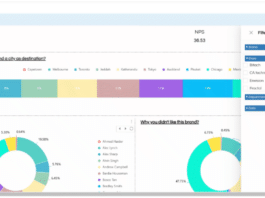Blockchain allows media platforms to host accurate targeted ads, maximising eCPM for better monetisation of their website traffic, which would increase ROI (Return On Investment) on ad placements for advertisers
The digital advertising industry, previously opaque and behind-the-scenes, is finally being pulled out into the light. Digital advertising’s unbridled collection and usage of user data is finally meeting legal resistance. DATx has launched blockchain software platform in the digital advertising to address this issue to some extent.
Blockchain can fill in for the lack of legal frameworks
Renowned for ability to keep data secure and anonymous, blockchain keeps an immutable, traceable digital ledger on digital “blocks” linked together through digital cryptography.
The blockchain technology, which is the underlying mechanism behind Bitcoin, is one such example, in the case of Bitcoin, these blocks store transaction data, but in practice, it could store any data.
Through blockchain technology, DATx hopes to achieve greater data privacy, security and build a whole new digital advertising ecosystem that gives data rights back to users.
Benefits for platforms and advertisers
The project doesn’t just give users a fairer playing field in the industry, it benefits all the players in the system. It establishes a digital advertising ecosystem incentivizing mutualistic interactions between users, advertisers and media platforms.
On this platform when users opt-in to provide their data, media platforms have full access to the user’s complete user profile, which includes how they browse and interact with content across the entire range of sites they visit.
This allows media platforms to host accurately targeted ads, maximising eCPM for better monetisation of their website traffic, which would also increase without low-quality ads and paywalls.
Steps that can move users beyond passive participation
Users participating in this ecosystem can opt into giving their data to advertisers and media platforms to receive DATx token incentives. Furthermore, they are able to select different levels of data authorization for different media channels.
This data is gathered, stored, and encrypted on the blockchain. No personal identifying information is collected; behaviour data comes in the form of feature tags that are linked to a user’s UID, which cannot be traced back to an address or name.
The system has a user account system and account behaviour file that enables uniqueness, cryptography, and blockchain storage. Based on the principle of user consent, this data is ultimately owned by the user. Users choose which media channels to open up their data with different levels of authorisation.




